Your Cart is Empty
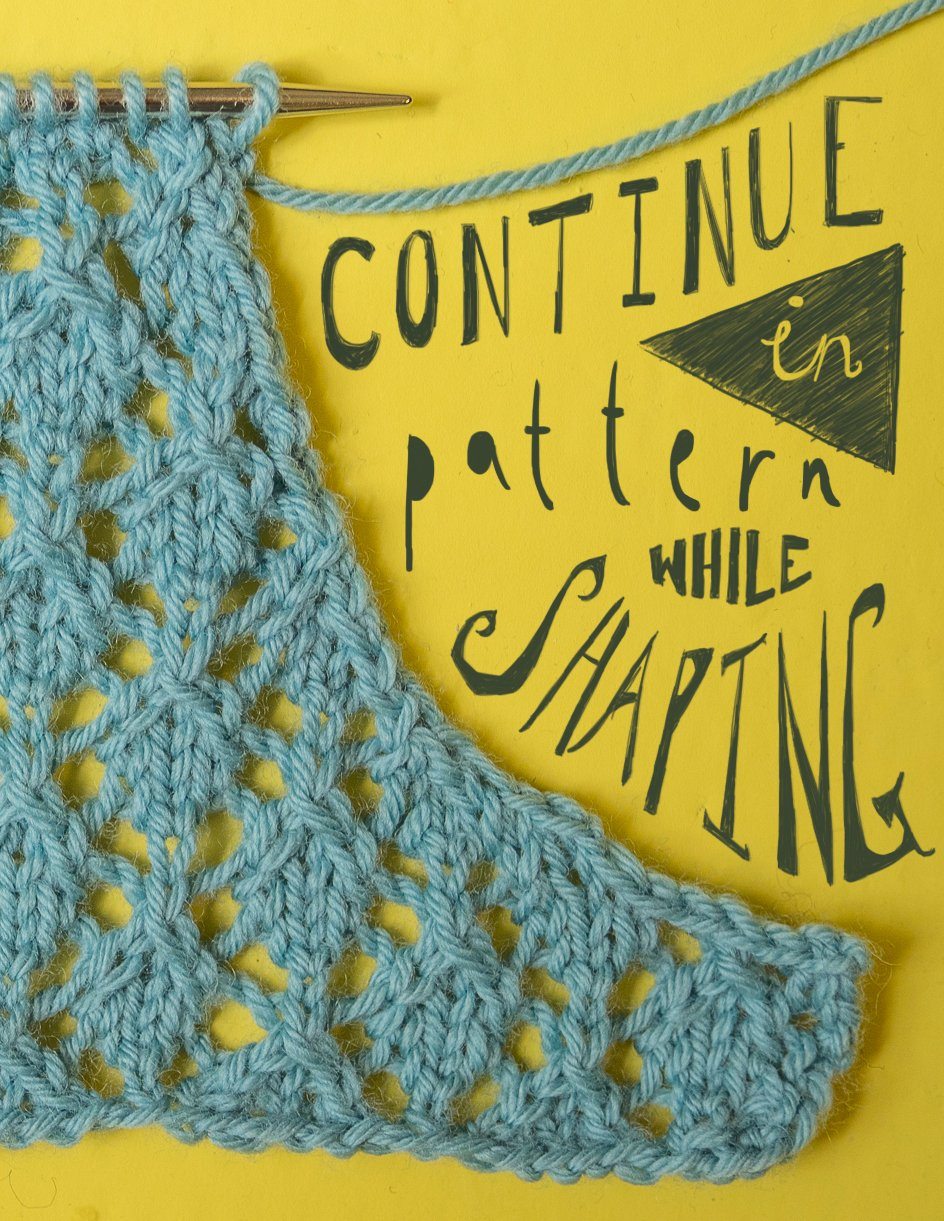
How to continue in pattern while increasing and decreasing
May 15, 2014
Does that phrase put you off a pattern completely? Make you nervous about whether you’re really doing it right? If it does, you’re not alone! When writing patterns I try to give specific directions for every detail, but sometimes the cleanest, most legible option is to establish a stitch pattern and leave it up to the knitter to keep it going.
I find it helpful to think of allover patterns as a piece of decorated fabric or paper that I’m cutting into with my shaping. Everything should line up vertically with the fabric in the middle, not necessarily with what the stitch below the increase or decrease used to be.
A very simple example
If I was working seed stitch and had a purl at the beginning of the row if I decreased right at the beginning my first stitch would then be a knit to maintain the pattern. Decrease again and that first stitch would switch back a knit. It doesn’t matter what the first stitch has been before, it matters what is next to it in the pattern.
Shaping in lace patterns
Let’s look at a fairly simple allover diamond pattern. We can tell from this chart that the pattern has the same number of stitches on every row (see this post if you’re unfamiliar with charts), which means that every yarn over is compensated for by a decreased stitch.
When shaping that is the crucial thing to remember — unless you want to decrease a stitch for your shaping, every yarn over must be compensated for. If there aren’t enough stitches for both the yarn over and the decrease don’t work either of them. Work those stitches in your ground pattern (usually stockinette but possible reverse stockinette, garter, seed etc).

How would we maintain this pattern while shaping something like an armhole?

These are the stitches that might be affected by the bite taken out of the fabric.

Rule 1: every yarn over must be compensated for.
Rule 2: no yarn overs or decreases right on the edge (another way to say this would be that I want a selvedge stitch to make seaming easier — your pattern might specify that this should be two stitches wide).
Rule 3: all shaping decreases should be worked 1 stitch in from the edge and should lean in the same direction.
After going through each potential trouble spot identified above the chart looks like this.

And in real life it looks like this:

It certainly isn’t necessary to chart out a pattern like this, but if you’re struggling to visualise how to shape your pattern it can be very helpful to plan ahead. You may find that especially useful when increasing since you’ll have less of the established pattern on the needles to guide you.
Decreasing almost invisibly in colourwork

In most stitch patterns whether to lean increases and decreases towards or away from the edge being shaped is simply an aesthetic choice. See this earlier Technique Thursday post for examples.
In stranded colourwork leaning decreases towards the edge being shaped and making sure to work them in the colour that matches the established pattern for that stitch will make them blend in almost imperceptibly. Sweet.
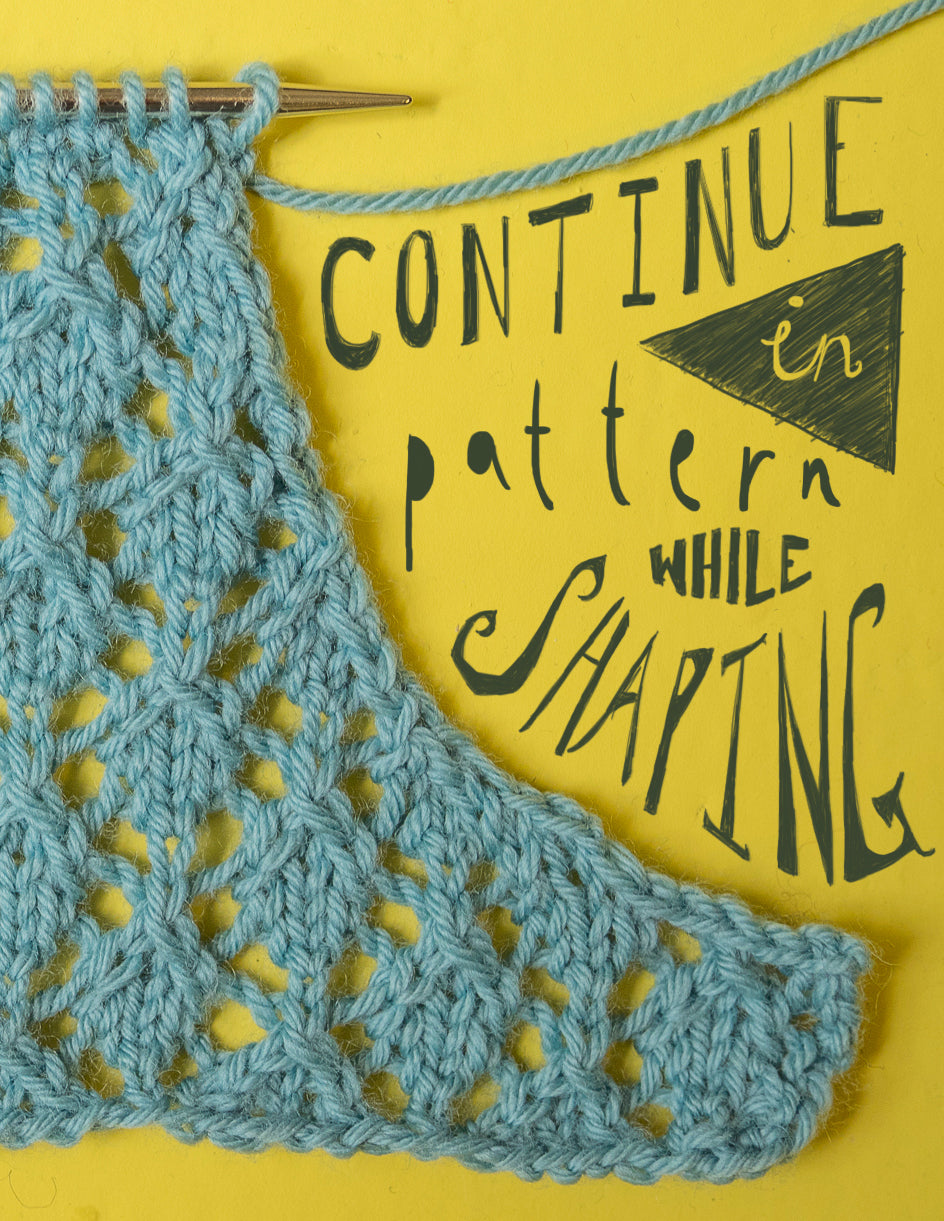
Also in Journal
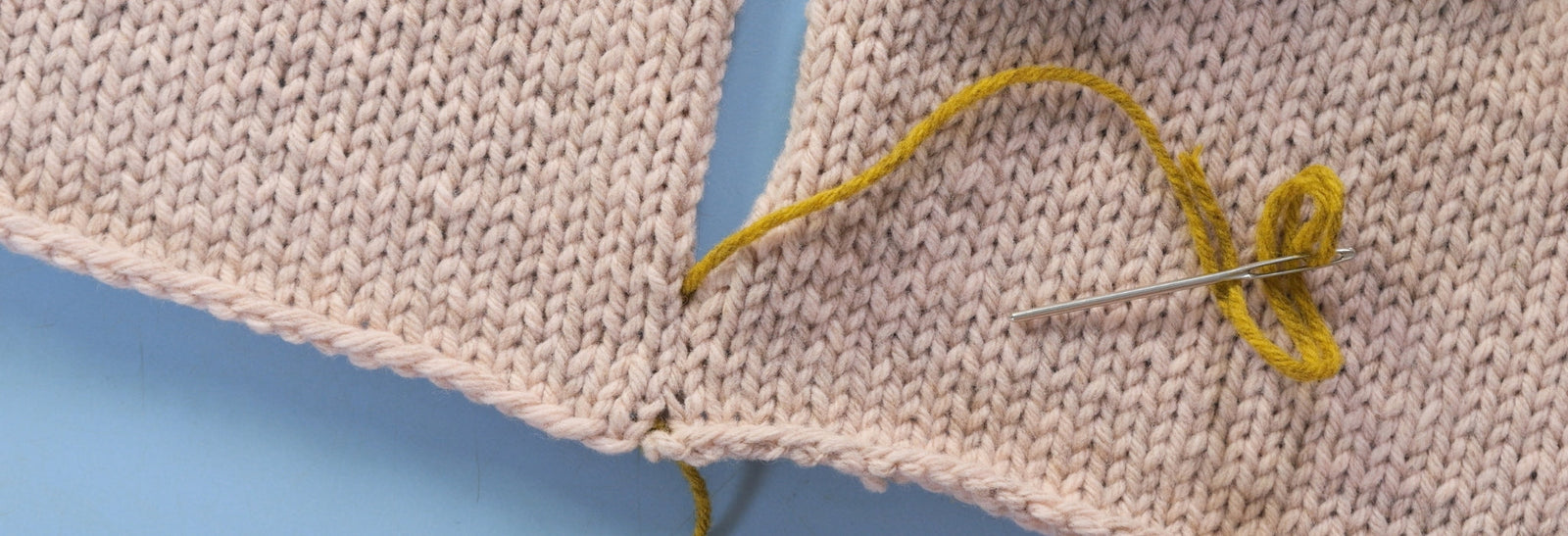
Learn to Knit: Mattress Stitch
March 29, 2023
By following our step-by-step mattress stitch knitting tutorial, you'll learn how to make your seams look beautiful and how best to prepare your knitting so that when you seam it with mattress stitch, it goes smoothly on the first try.
Read More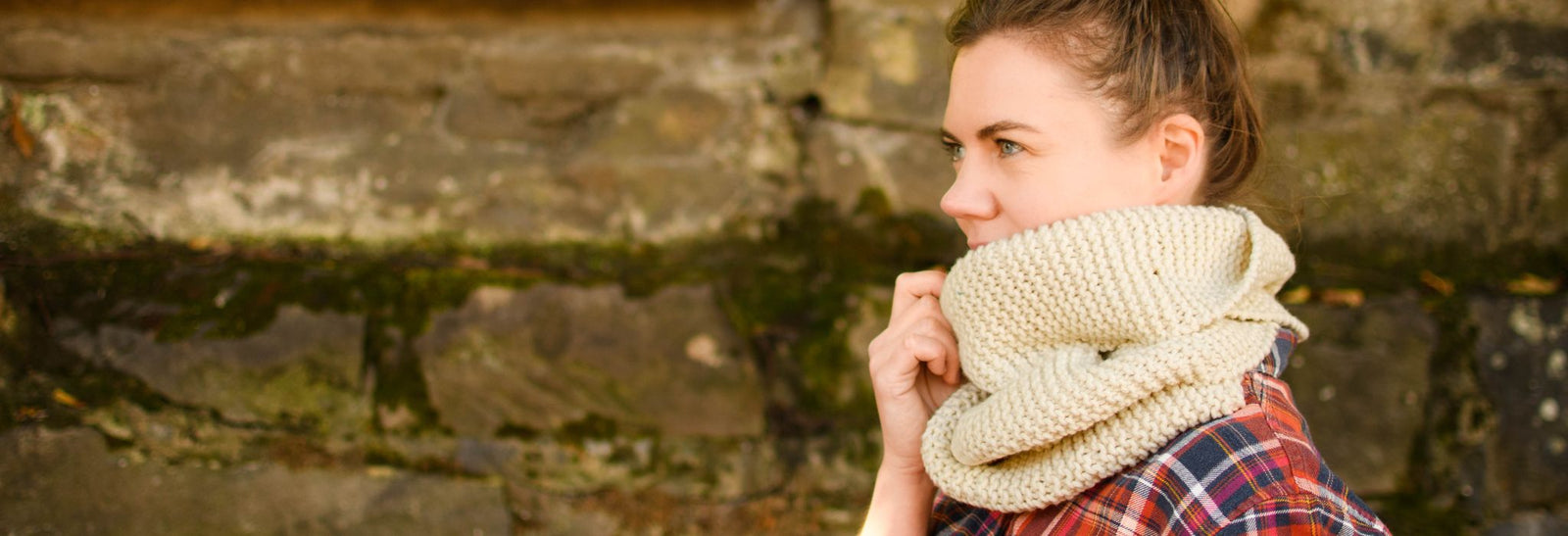
How to Knit a Scarf: A Beginners Guide to Scarf Knitting
March 23, 2023
Want a quick and easy beginners tutorial on how to knit a scarf? This garter stitch scarf is easy to knit and requires just 3 skills; casting on, the knit stitch and casting off.
Read More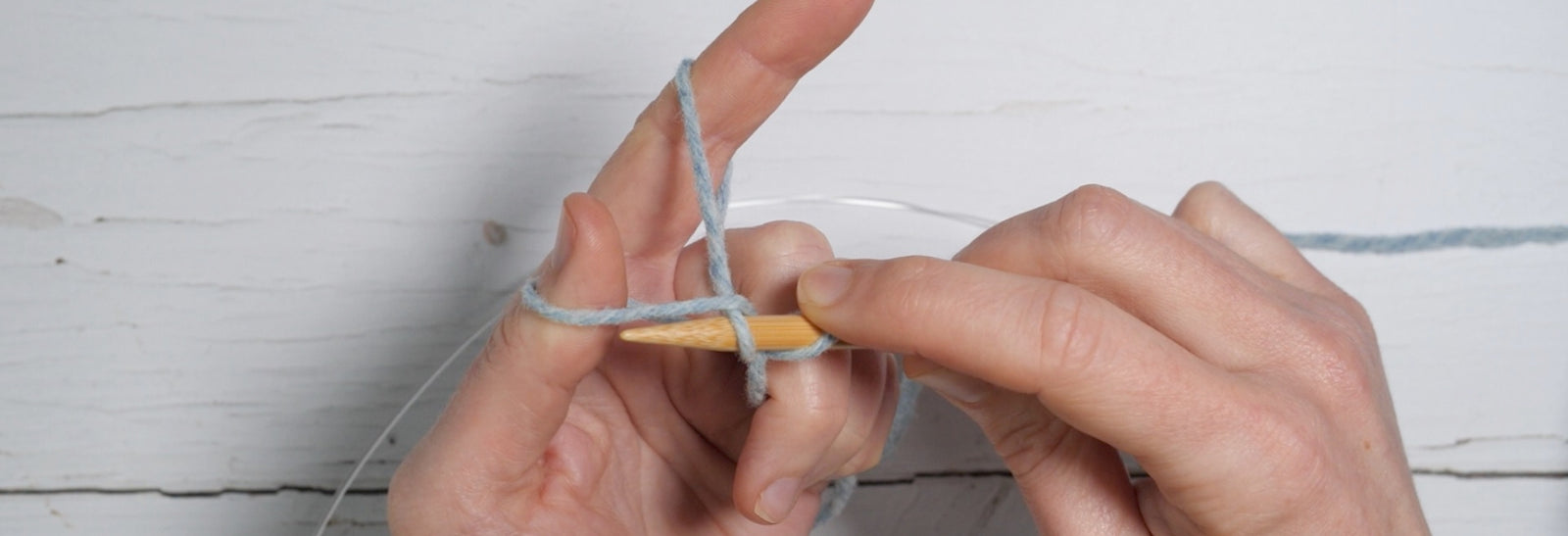
Learn to knit: the long tail cast-on
February 03, 2022
The long tail cast on is a great multi-purpose knitting cast on and the perfect place for beginner knitters to start. Learn how to work the long tail cast on and how to estimate the length of yarn needed with our clear step by step tutorial and video.
Read More Recent Articles
- Learn to Knit: Mattress Stitch March 29, 2023
- How to Knit a Scarf: A Beginners Guide to Scarf Knitting March 23, 2023
- Learn to knit: the long tail cast-on February 03, 2022
- How to Kitchener Stitch December 09, 2021
- Crochet Provisional Cast-on December 02, 2021
- Learn to knit: How to knit in the round with double pointed needles November 25, 2021
- Learn to knit: How to knit in the round using the magic loop technique November 25, 2021
- Learn to knit: How to knit in the round November 25, 2021
- Knitted Gift Ideas for you and your loved ones November 18, 2021
- Celebrating our Porty Hat Preview Knitters October 28, 2021
Free resources
-
KALS, step-by-step pattern guides and free patterns
Learn brioche with the free Daniel's Hat pattern
Tombreck - a free chevron beanie pattern
Working the brioche neck detail on the Polwarth sweater
Basics
Casting on
Decorative Channel Island Cast-on
Binding off
3 Easy Stretchy Bind-offs (p2tog bind-off; k2togtbl, k1 bind-off; Jeny's surprisingly stretchy bind-off)
Tubular Bind-off for brioche stitch
Increasing
Paired increase methods compared
Decreasing
Brioche stitch double decreases
Knitting in the round
How to Knit in the round using Magic Loop
How to Knit in the round using DPNs
Short rows
Swatching and gauge
Tips and tricks
Avoiding ears when binding off
Tighter purl stitches for neater cables and ribbing
Cabling without a cable needle
Reading knitting patterns
Understanding "continue in pattern"
Finishing
Garment knitting
Joining the body and sleeves on a seamless bottom up sweater
Sizing
Inclusive garment knitting
How to pick a garment without a model for you (specifically addresses finding garment patterns when your gender identity isn't represented and the styles you want to knit might not be sized to fit your body)
How does ease affect inclusive size ranges?
Specific stitch patterns
Lace
Identifying and fixing mistakes in lace knitting
Colourwork
Getting started with stranded colourwork
Understanding colour dominance
Working stranded colourwork over small circumferences
Decreases in stranded colourwork
Holding the yarn for stranded colourwork
Ladderback Jacquard (a neat way to deal with long floats)
Cables
Cabling without a cable needle
Cabling without a cable needle on the wrong side
How to knit cabled decreases
Closed ring cable increases and decreasesBrioche
How to work brioche stitch in the round
Other crafts
Cross stitch
How to begin your first large cross stitch project
How to finish a cross stitch project with an embroidery hoop frame
Mending

Sign up today
Find out the latest news from the studio such as sales, pattern releases, and new workshops or KALs our learning community, The Knitwork. We also share helpful tips and exclusive subscriber discounts...

